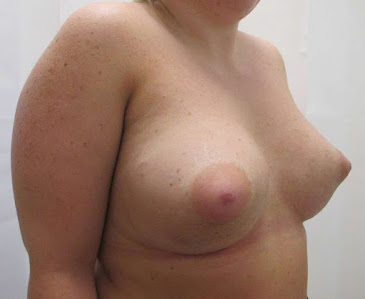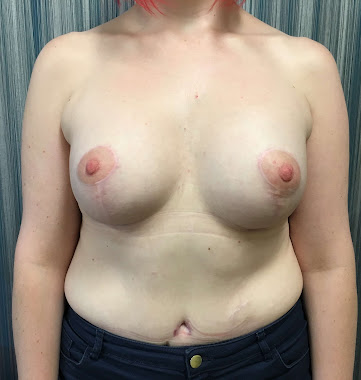Tubular or Tuberous Breast
Tuberous breasts or (tubular breasts)
Are a result of a congenital deformity of the breasts which can occur in both men and women, also called Hypoplasia, in one breast or both. During puberty breast development is halted and the breasts fail to develop normally and fully. Remember that you can have ASYMMETRY as one breast may be normal and the other tubular, or that both are tubular but one worse than the other.
The exact cause of this is as yet unclear, however, a study in 2011 of the cells in the breasts of both males and females with tubular breasts suggested a genetic link in a disorder of collagen deposition. The condition is thought to affect one to five per cent of women undergoing breast augmentation; however, the proportion of the general population affected is unknown as surgery is not always sought.

Technically the shape of the breast is defined by:
Elongated breast shape
The base of the breast is narrower than usual
High inframammary crease – the fold underneath the breast
Herniation – areola has become a little wider and more domed
The tuberous breast deformity was first described by Rees and Aston in 1976 following which a method of classifying the severity was developed. The breast is basically restricted and these restrictive bands have to be released inside the breast to allow the lower breast to fill out. These tight bands may still be seen even after breast augmentation but tend to lessen over time as the implant settles into the lower breast,
The surgical classifications refer to which areas of the breast are affected and is divided into three grades; mainly in the
Lower medial breast affected (Grade I)
Essentially, the treatment of these tubular breasts can be by implants. If you’ve got a little bit of constriction at the base and the nipples are in a relatively normal position, often a breast implant alone is enough
The whole of the inferior breast if underdeveloped (Grade II)
Again depending on the level of constriction the base can be brought out with an implant and usually the areolar has to be operated on to reduce its prominence.
Affecting the whole breast (Grade III)
This is a more severe case, with more tuberous breasts and possibly more doming of the areola, you may need a tissue expander, which is going to gradually stretch the base of your skin, combined with a procedure to reduce the nipple-areolar prominence.
Asymmetry
One breast is more tubular than the other a periareolar mastopexy technique. The base of the breast is tight and is riding high on the chest wall under the breast.
When tuberous breasts have been corrected by a combination of breast implants, tissue expanders or nipple correction surgery, your results will be stable.
The appearance of your breasts will change if you change weight or become pregnant and breastfeeding. These changes would occur in non-tubular breasts and cannot be ultimately predicted. This may have an impact on the time in your life you decide to go ahead with a tuberous breast correction.
Patient 1
with Grade II
This Lady Has a grade II tubular breast deformity .ie underdevelopment of the bottom of the breast, but doesn’t have a severe projection of the nipple and areolar but needs a lift, the breast is even in size.
Pre Operative

Post-Operative

Patient 2
Pre-operative
Right side Grade I and left side Grade II


Post-Operative
after 6 weeks
Implants under the breast, Right=335g, Left= 375g
No correction to the nipple so still protrudes


Patient 3
Mild grade II tubular with the projecting areolar



Post Operative 8 weeks
Shaped 375cc implants under the breast



Patient 4
Right side slight grade I and left I-II
Asymmetric in size
NEEDS
A bilateral breast lift and lipofilling to left breast
Pre-operative



Post-Operative
8 weeks
After breast lift and lipofilling
(Lady also had abdominoplasty at the same time)



Post-Operative
10 weeks
At 12months decided on a breast augmentation
placement of round implants under the breast



